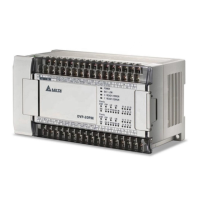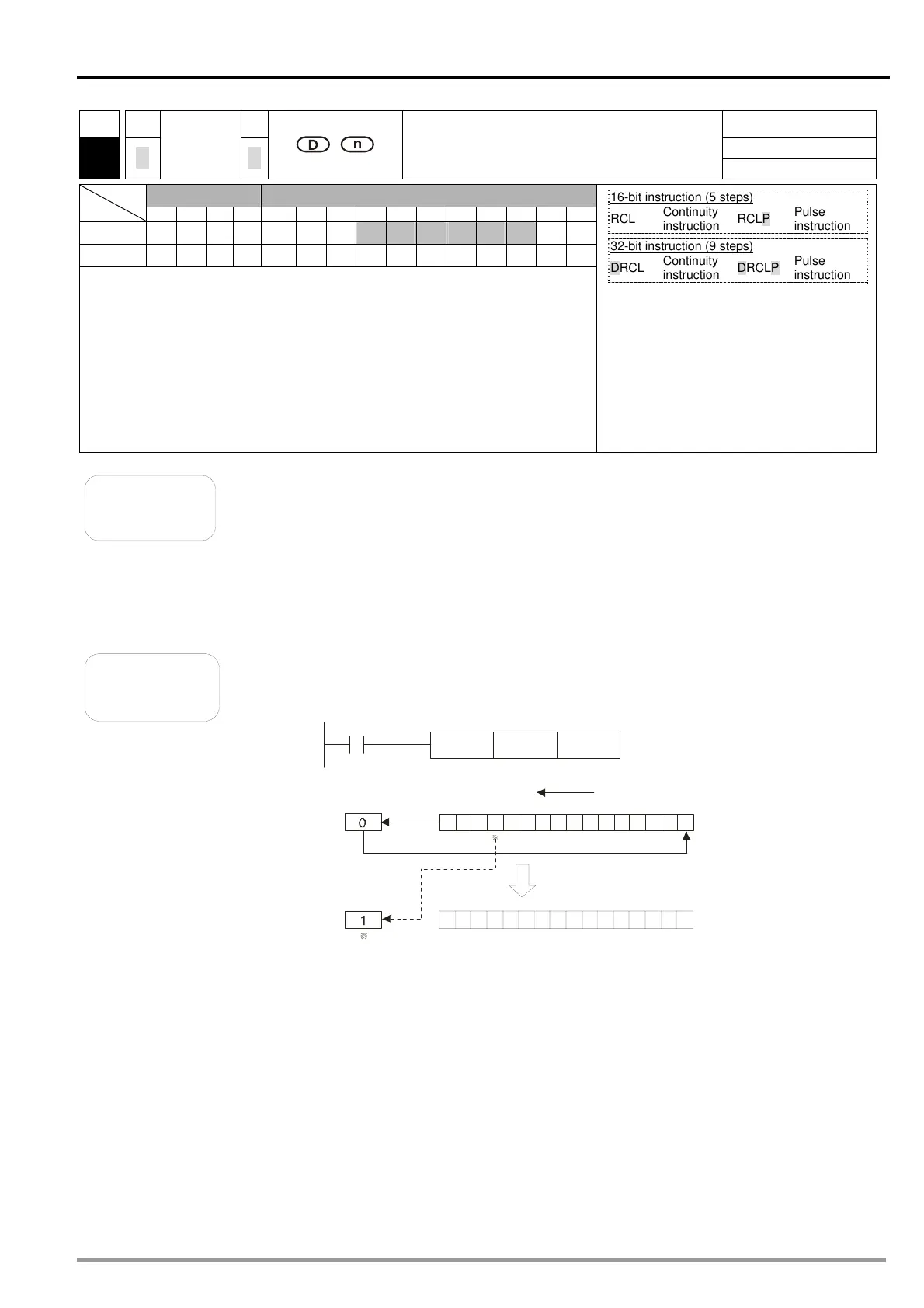5 Applied Instructions and Basic Usage
DVP-20PM Application Manual
5-51
API
Applicable model
20PM
33
D
D
RCL
P
P
Rotating bits leftwards with a carry flag
Bit device Word device
X Y M S K H KnX KnY KnM KnS T C D V Z
D
* * * * * * * *
n
* *
Note: The instruction supports V devices and Z devices. (If the 16-bit
instruction is used, Z devices can not be used. If the 32-bit
instruction is used, V devices can not be used.)
Please refer to specifications for more information about device
ranges.
If KnX/KnY/KnM/KnS is used, it is suggested that X/devices/Y
devices/M device numbers/S device numbers should start from a
number which is a multiple of 16 in the octal numeral system or in the
decimal numeral system, e.g. K1X0 (octal numeral system), K4SY20
(octal numeral system), K1M0 (decimal numeral system), and K4S16
(decimal numeral system).
16-bit instruction (5 steps)
RCL
Continuity
instruction
RCLP
Pulse
instruction
32-bit instruction (9 steps)
DRCL
Continuity
instruction
DRCLP
Pulse
instruction
Flags
Ox O100
M1810 M1970 Carry flag
Please refer to the additional remark below.
Explanation
D: Device which is rotated。n: Number of bits forming a group
The bits in D are divided into groups (n bits as a group), and these groups are
rotated leftwards with a carry flag.
The n
th
bit from the left is transmitted to a carry flag.
Generally, the pulse instructions RCLP and DRCLP are used.
If the operand D is KnY/KnM/KnS, Kn in KnY/KnM/KnS must be K4 (16 bits) or
K8 (32 bits).
16-bit instruction: 1≤n≤16; 32-bit instruction: 1≤n≤32
Example
When X0 is turned from OFF to ON, the bits in D10 are divided into groups
(four bits as a group), and these groups are rotated leftwards with a carry flag.
(The bit marked with ※ is transmitted to the carry flag.)
High byte
Low byte
Rotating the bits in D10 leftwards
Rotating the
16 bits in D10
Carry flag
Carry flag
Low byte
High byte
X0
D10 K4
11111100 00011 000
1100000 10000111 1
D10
D10
RCLP

